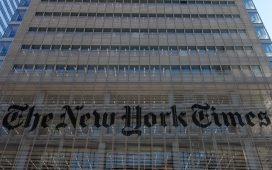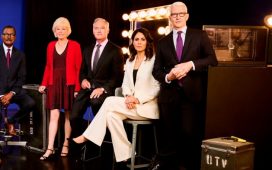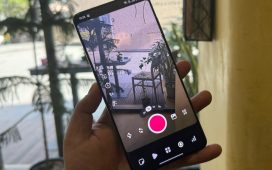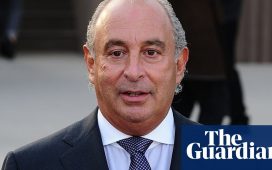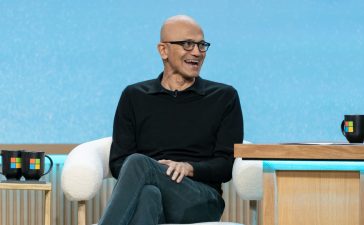DJs and musicians looking for a new sound usually draw on classic movies and hit songs for inspiration – not University Challenge. But the venerable BBC quiz show’s new presenter, Amol Rajan, went viral last week after music producers decided something he said was too perfect to pass up.
The 40-year-old journalist said he had become “rather emotional” and had “reconnected … with my younger self” at the attention from DJs, record labels and music fans.
During an episode of the quiz, Rajan asked for the name of the dance music genre that had developed from the 1990s rave scene and reggae sound system culture.
“Drum’n’bass,” came the answer from the University of Aberdeen.
“I can’t accept drum’n’bass – we need jungle, I’m afraid,” Rajan replied.
Nathan Filer, an author and researcher at Bath Spa University, posted the clip on X and, as Rajan put it, “all hell broke loose.” Dozens of musicians and music producers sampled his words and Rajan said in a BBC blog on Saturday that it has now led to him being played on BBC Radio 1, invited to perform at festivals, and acquiring “a cult following in the jungle scene”.
It’s hard to imagine what Bamber Gascoigne or Jeremy Paxman might have made of being sampled, but Rajan revealed himself to be a fan, and part of an emerging “D’n’BBC” collective, alongside Ros Atkins, the corporation’s news analysis editor and a former DJ. “My first love musically is reggae – I am obsessed with the culture of 1960s Jamaica – and jungle has its roots there,” Rajan wrote in his blogpost. Two of his friends were “massive drum’n’bass heads”, he said, and had performed live a few times, occasionally supported by Rajan as “DJ Moley”.
So exactly what is the difference between drum’n’bass and jungle?
As Rajan writes in his blog, there is “an ancient debate about where drum’n’bass ends and jungle begins”, even if purists would point out that, actually, jungle came first.
Exactly who coined the term is also a matter of debate, but jungle was essentially a mixture of reggae and hardcore techno at its birth, nursed into popularity by pirate radio stations around London and Bristol.
Modern drum’n’bass has developed a variety of strands, from laid-back vocal-led liquid funk to the stripped-back industrial aggression of neuro bass, and the clattering breakbeats and Jamaican dancehall sounds of jump-up.
But listeners will find few samples from TV shows or movies – a common feature of 1990s jungle tracks such as Shy FX’s Gangsta, which sampled Ray Liotta’s opening line from Goodfellas: “As far back as I can remember, I always wanted to be a gangster”.
Since then sampling has become much harder to get away with, after numerous lawsuits and copyright claims. A producer who could have got away with using an uncleared sample on a few thousand vinyl records in the 1990s now has to clear the algorithmic checks performed by large streaming platforms such as YouTube and Spotify.
But who needs samples if you have the real thing? Rajan revealed he had been approached by well-known DJs to do sets at their festivals, with Hospital Records, one of the leading drum’n’bass labels, offering him a live performance.
“I note Filer has updated his [Twitter] profile to say: ‘Unexpected player in a junglist revival’,” Rajan wrote. “Me too, boss, and I’m grateful for the precision with which you used the term. Because I can’t accept drum’n’bass.
“We need jungle, I’m afraid.”

